Sam's story: Canadian delegation retraces the steps of N.S. Mi'kmaq war hero
Thursday was an emotional and powerful day for Jeff Purdy who fulfilled a lifetime dream of walking in the footsteps of his great-grandfather, Sam Glode, a Mi’kmaq soldier from Nova Scotia.
“It’s hard to describe it in words. The feeling of being here, being able to walk where Sam walked. It’s very powerful,” said Purdy.
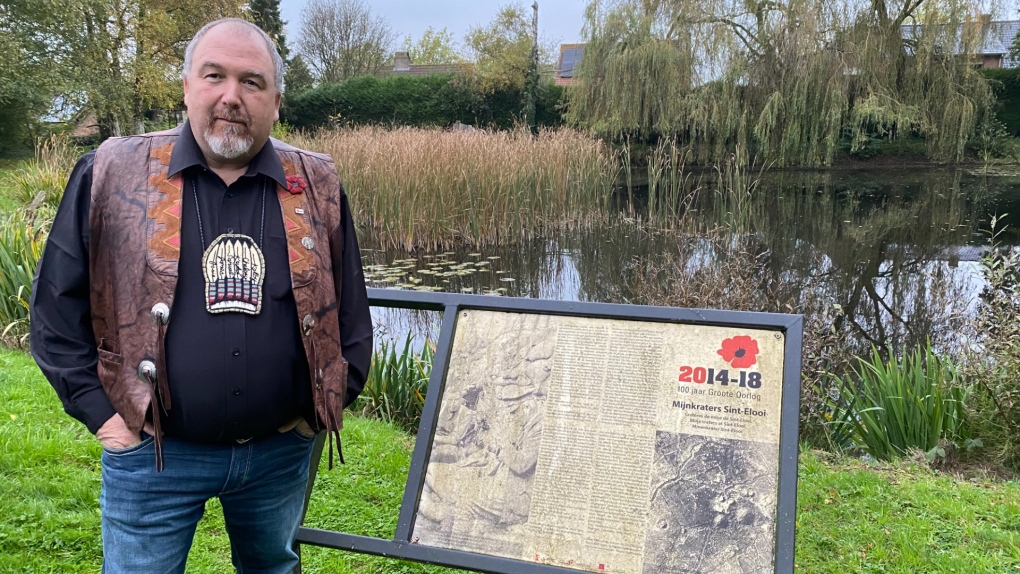 Jeff Purdy's great-grandfather, Sam Glode, was a Mi’kmaq soldier from Nova Scotia during the First World War. (Derek Haggett/CTV Atlantic)
Jeff Purdy's great-grandfather, Sam Glode, was a Mi’kmaq soldier from Nova Scotia during the First World War. (Derek Haggett/CTV Atlantic)
Purdy is part of a Canadian delegation in Ypres, Belgium, who are honouring Canadian Indigenous veterans from the First World War.
With the help of a local historian who did meticulous research on Purdy’s ancestor, the group were able to retrace the steps of Glode through Flanders Fields.
“He stood up for who he was. A strong, honourable man that loved his family. He knew who he was as a Mi’kmaq man. Being Mi’kmaq and coming here and being able to serve his country was a big, big thing,” said Purdy.
Glode was a lumberjack, trapper and a hunting and fishing guide from Milton, N.S., who served his country during the Great War.
He was also a war hero.
At the age of 35, Glode joined the Canadian Expeditionary Force because the security of regular pay and a good livelihood in the army was just too much to pass up.
By 1915, he was an infantry soldier, but eventually became a Royal Canadian Engineer first in Belgium and then later in France.
Glode’s company dug tunnels around Ypres and he was promoted from corporal to sergeant after he coordinated the digging out of two units of men from a collapsed tunnel under no man’s land at Messines Ridge.
He would eventually guide around 20 men to escape from the Germans under nightfall.
Glode would later receive the Distinguished Conduct Medal for his heroic efforts.
Belgian historian Erwin Ureel led the tour through graveyards, battlefields and massive craters left behind from bombs – all areas where Glode served.
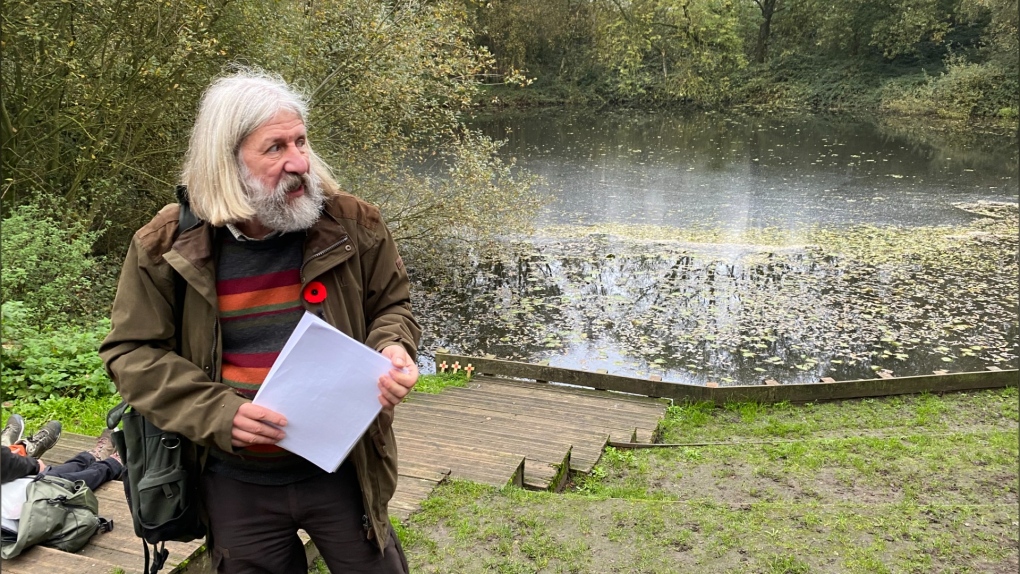 Belgian historian Erwin Ureel is pictured. (Derek Haggett/CTV Atlantic)
Belgian historian Erwin Ureel is pictured. (Derek Haggett/CTV Atlantic)
Ureel pored over war diaries for the past year to make sure the group of around 20 Canadians could walk where Glode walked and hopefully get some idea of what he experienced during his service in the Belgian countryside.
Glode died before Purdy was born, but the incredible tales of his time on the Western Front were passed down to him when he was a child.
“His war stories, his hunting and fishing stories. Walking in his footsteps in Nova Scotia, back home where he hunted and fished, guided and all of that, was still a big part of my life, but to be able to come here was always part of my bucket list of wanting to come here and trace my family’s history and to be able to honour Sam,” said Purdy.
Through Ureel’s research and tour through fields, farms and cemeteries, Purdy was able to find out a lot that he didn’t already know about his great-grandfather.
“General stories overall, yes, but down to a lot of the little details and stuff, I didn’t know. So that was a huge takeaway for me of being able to tell Sam’s legacy and go back and be able to tell my family,” said Purdy.
It was also an emotional day for other members of the delegation.
“This experience today has been an incredible journey. It’s been an eye-opener for me,” said Regional Chief Andrea Paul. “You do the honouring and you think about it when we do our service, but when you are actually in the space and you’re hearing the stories and the history and the way these troops came together and all of it by foot and carrying everything. It’s really given me an even greater appreciation of our ancestors that came and fought and protected.”
The day began at the Hill 62 Memorial, which honours the Canadian participation in the defence of Ypres.
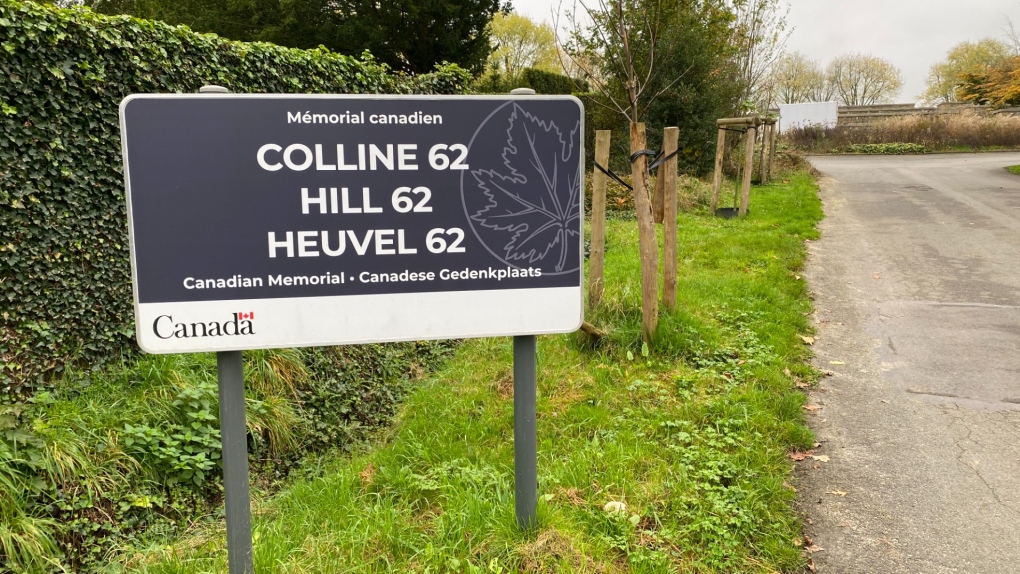 The Hill 62 Memorial honours the Canadian participation in the defence of Ypres, Belgium. (Derek Haggett/CTV Atlantic)
The Hill 62 Memorial honours the Canadian participation in the defence of Ypres, Belgium. (Derek Haggett/CTV Atlantic)
Mi’kmaw Native Friendship Centre elder Debbie Eisan held a smudging ceremony for the delegation.
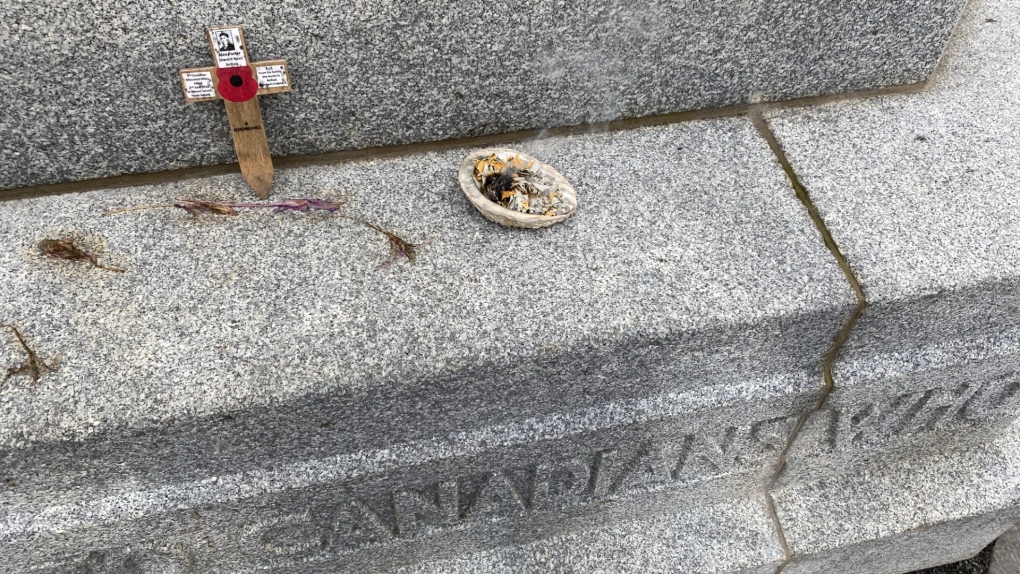 Mi’kmaw Native Friendship Centre elder Debbie Eisan held a smudging ceremony for a Canadian delegation in Ypres, Belgium, who are honouring Canadian Indigenous veterans from the First World War.
Mi’kmaw Native Friendship Centre elder Debbie Eisan held a smudging ceremony for a Canadian delegation in Ypres, Belgium, who are honouring Canadian Indigenous veterans from the First World War.
From there, it was off to nearby Ridgewood Military Cemetery where the delegation heard stories of other Canadian Armed Forces Indigenous soldiers who served and died in the area.
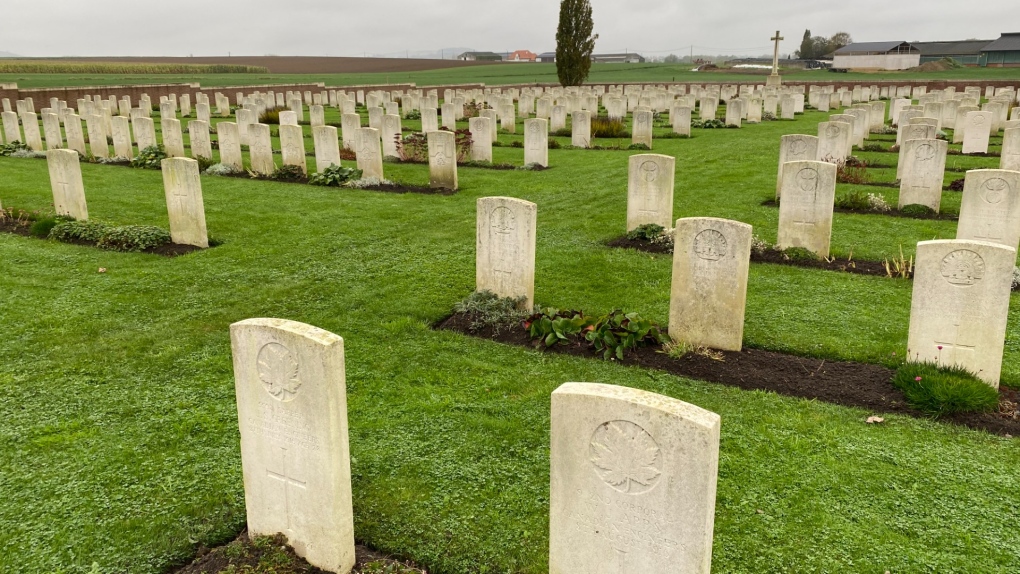 Graves are pictured at Ridge Wood Military Cemetery in Ypres, Belgium. (Derek Haggett/CTV Atlantic)
Graves are pictured at Ridge Wood Military Cemetery in Ypres, Belgium. (Derek Haggett/CTV Atlantic)
Perhaps the most eye-opening experience of the tour was seeing the Spanbroekmolen Krater, a massive bomb crater created by 9,000 pounds of explosives during the Battle of Messines that is now a pond in the Flemish countryside.
The last stop of the day took place at dusk at a farm on the Messines Ridge, the location where Ureel was confident the tunnel collapsed.
“This was the main story that my family kept talking about when I was growing up,” said Purdy.
The delegation then presented gifts to Purdy and Ureel before calling it a day.
Purdy said during the tour he texted his mother back in Milton, N.S., who knew her grandfather well.
“She was very excited, very thankful that I got to come over here, to learn where Sam was,” said Purdy.
A councillor with Wasoqopa’q, Acadia First Nation, Purdy was asked if he believes Canada’s Indigenous veterans have been recognized enough for their sacrifices.
“They’re starting to now,” said Purdy. “That was part of being franchised. If you come over here and served in a war you weren’t recognized as being Mi’kmaq anymore, or Indigenous across Canada.”
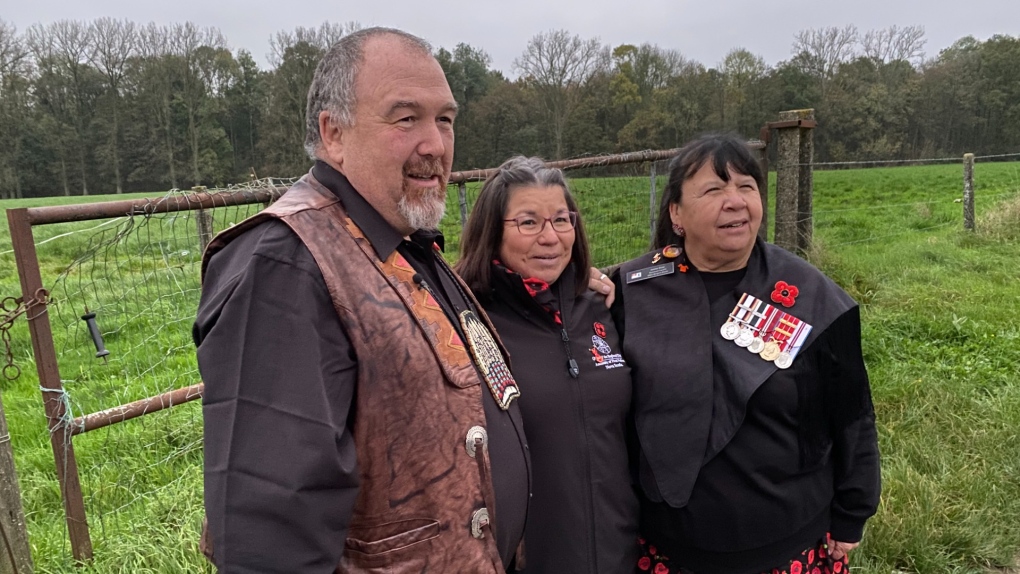 Jeff Purdy, Chief Andrea Paul and Elder Debbie Eisan are pictured. (Derek Haggett/CTV Atlantic)
Jeff Purdy, Chief Andrea Paul and Elder Debbie Eisan are pictured. (Derek Haggett/CTV Atlantic)
“I’m going to say no,” said Chief Paul. “I don’t think they get the recognition that they deserve because if they did, I think that more of our people would really have a better understanding of what they did to protect our country. I think more needs to be done.”
More information on Sam Glode can be found here.
Click here for more photos from around Ypres.
This article was produced in partnership with Visit Flanders.
CTVNews.ca Top Stories

Poilievre writes to GG calling for House recall, confidence vote after Singh declares he's ready to bring Liberals down
Conservative Leader Pierre Poilievre has written to Gov. Gen. Mary Simon, imploring her to 'use your authority to inform the prime minister that he must' recall the House of Commons so a non-confidence vote can be held. This move comes in light of NDP Leader Jagmeet Singh publishing a letter stating his caucus 'will vote to bring this government down' sometime in 2025.
School custodian stages surprise for Kitchener, Ont. students ahead of holiday break
He’s no Elf on the Shelf, but maybe closer to Ward of the Board.
Kelly Clarkson's subtle yet satisfying message to anyone single this Christmas
The singer and daytime-talk show host released a fireside video to accompany her 2021 holiday album, “When Christmas Comes Around” that she dubbed, “When Christmas Comes Around…Again.
Judge sentences Quebecer convicted of triple murder who shows 'no remorse'
A Quebecer convicted in a triple murder on Montreal's South Shore has been sentenced to life in prison without chance of parole for 20 years in the second-degree death of Synthia Bussieres.
At least 2 dead, 60 hurt after car drives into German Christmas market in suspected attack
A car plowed into a busy outdoor Christmas market in the eastern German city of Magdeburg on Friday, killing at least two people and injuring at least 60 others in what authorities suspect was an attack.
16-year-old German exchange student dies after North Vancouver crash
A 16-year-old high school student from Germany who was hit by a Jeep in North Vancouver, B.C., last weekend has died in hospital, authorities confirmed.
Poilievre to Trump: 'Canada will never be the 51st state'
Conservative leader Pierre Poilievre is responding to U.S. president-elect Donald Trump’s ongoing suggestions that Canada become the 51st state, saying it will 'never happen.'
Canadiens executive says he has 'no concern' about members of the front office travelling to Russia
Montreal executive vice president of hockey operations Jeff Gorton said he has 'no concern' about members of the Canadiens' front office travelling to Russia with the country’s war in Ukraine ongoing.
Speeding drivers get holiday surprise from 'Officer Grinch'
Drivers in the Florida Keys who exceed the speed limit in school zones may run into a well-known gloomy green creature and get a surprising 'gift.'


































